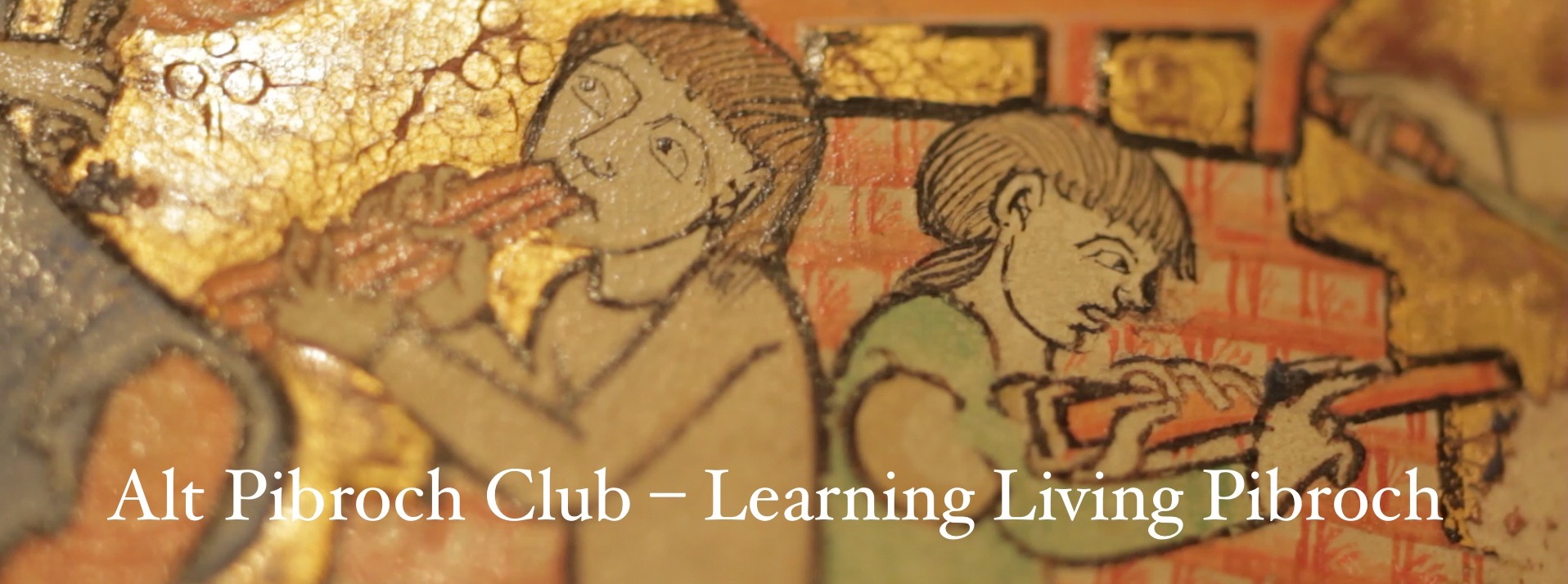Comparing Sources
The over-arching project is to produce recordings of each of the tunes in the Hannay-MacAuslan collection.
There are a number of reasons for this:
- The collection is the earliest scores we have from a piper of these 10 full pibrochs. Certainly we have sources that are earlier, but they are either from non-pipers (Young, Oswald, Dow, MacDonald, Ross, Menzies) and whenever we come across a pibroch that has a version of theirs, it is important to turn to them. We also also have earlier piper sources (J MacDonald, Colin Campbell). But this collection is important because it represents the earliest (a) staff notation we have of these (b) full pibrochs.
- This collection made it into Donald MacDonald’s book, though not without editing. Which means, Donald MacDonald’s book becomes a secondary source, and here we have the primary.
- It is profoundly neglected and overlooked by pipers and publishers. Almost no academic work as been done on it since Roderick Cannon’s initial analysis. The scores have never been typeset or published. Which is a shame, given their provenance and status as primary. (We have tried to correct this by providing our own modern typeset versions of the scores on the Musical Materials site.)
I want to use this opportunity to begin applying the Rules that I had previously described as being a fundamental toolkit for approaching pibroch. I will be spending the course of the next several months testing the usefulness of these Rules, seeing what results from them. The idea is to begin to build (by means of demonstration and feedback) a demonstrable, repeatable approach to help demystify the scores, broaden the interpretive palette, grow more familiar with the forgotten “new world” that primary source manuscripts represent to us.
To begin to do so, I begin by turning to our first song* (PS 170 - Glengarry’s March).
Before digging into the multiple scores that appear on the Musical Materials site (and elsewhere), I want to spend some time up front entering into the journey of familiarizing myself with the background of this piece.
I’ll start by listening to Allan MacDonald’s pronunciation of the title. Why? Well, out of respect to the Gaelic origins of the piece, and perhaps to entice an attitude of inquiry and curiosity into the depths of this musical tradition and its history. Roderick Cannon’s dictionary entry, a suggestive bit of insight into the Gaelic title, offers that “only the English title seems to have been used in modern times.” I wonder if we are not now able, thanks to Allan, Barnaby and Roddy’s work, to use the Gaelic title?
Additionally, we learn bit more about the history of this piece: there are some intriguing references to published studies on the pibroch and the event to which it refers: the burning of the church of Cille Chriost by members of MacDonald’s clan. Doing a bit of reading, it seems the story is a pastiche of several events centuries apart from each other.
But the idea behind it spurs the imagination. As a musician, perhaps I could allow this story to shape my interpretation. It causes me to ponder the genre implications of the tune, to wonder about the title: In what way would this be a “march” and not a “lament”?
We’ll address this, later.
Excursus: it is a shame that the Piobaireachd Society has declined to adopt Roderick Cannon and Barnaby Brown’s excellent work in creating a definitive concordance of pibroch scores, standardizing names and providing a reference number. This tune offers one of a number of examples as to why they should consider doing so.
As we all know, pibroch titles are a mess. For example, this tune is known by two titles, “Gille Chriost” (spelled no less than five different ways) and “Glengarry’s March” (not to be confused with “Glengarry’s Lament“, a much later and different composition altogether). Using the concordance and reference number would clarify and clean up the references, and add a level of clarity and care to the Piobaireachd Society effort.
More to follow…

